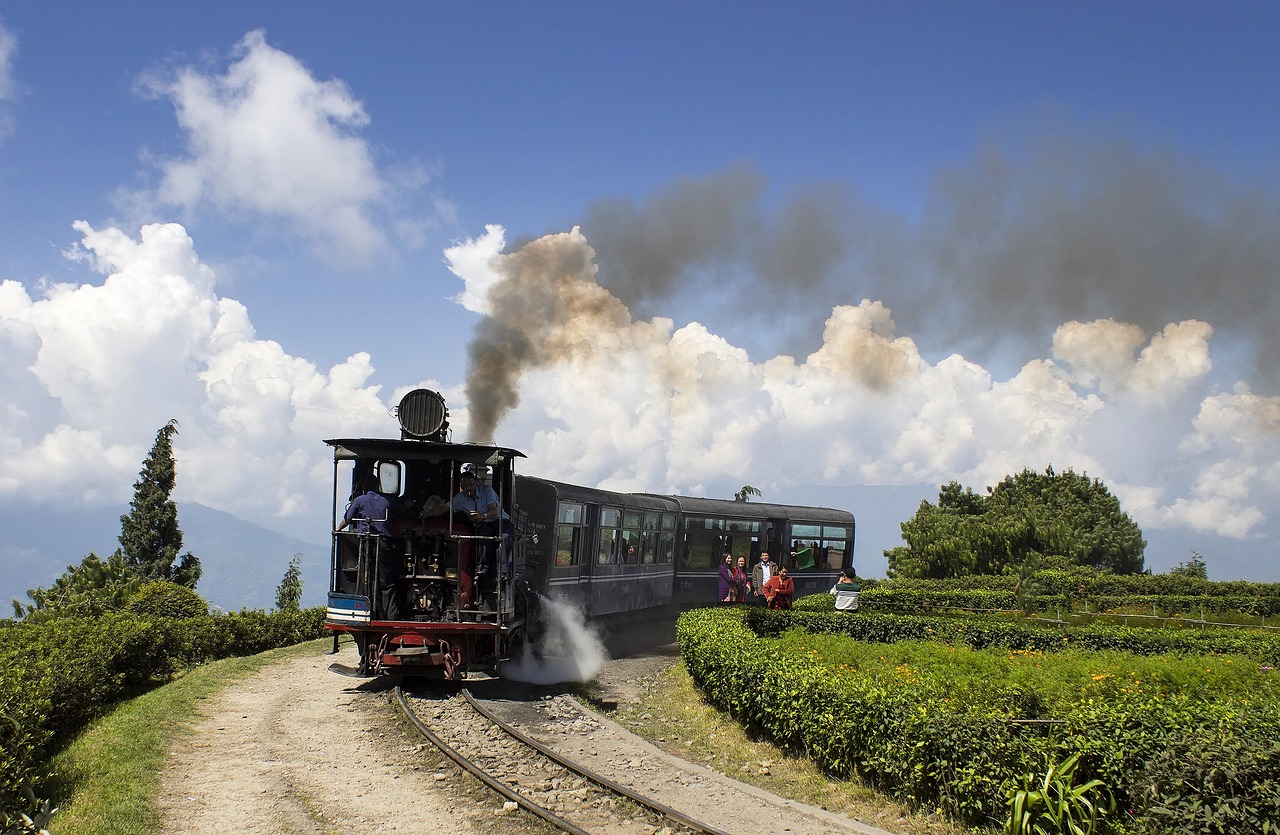
Darjeeling, a hill town in West Bengal, India, is situated in the lower Himalayas at about 2,042 meters in altitude. It is famous for its breathtaking landscapes, pleasant climate, and rich cultural heritage. Darjeeling is well-known for its tea, often called the “Champagne of Teas,” which has a unique flavor due to the region’s climate and elevation, making it highly valued worldwide. The tea industry plays a vital role in the local economy. The town is culturally diverse, housing various ethnicities such as Nepalis, Tibetans, and Bengalis, which influences its festivals, cuisine, and everyday life. Darjeeling is also rich in biodiversity and part of the Eastern Himalayan ecosystem, highlighting the importance of conservation efforts to protect its delicate environment and resources. The area has a historical significance, especially during British colonialism, as it was developed as a hill station, with many historical buildings and institutions from that period still present today. Darjeeling is a key starting point for various trekking routes in the Eastern Himalayas, including the Sandakphu Trek, which provides stunning views of major peaks like Everest and Kanchenjunga. The town is home to significant festivals such as Dashain, celebrated by the Nepali community with family gatherings and prayers, and Losar, the Tibetan New Year, characterized by traditional dances and vibrant processions. The Tea & Tourism Festival highlights the region’s tea heritage through tastings and cultural exhibitions. Darjeeling’s scenic landscapes have made it a popular filming location for Bollywood movies like “Barfi!” and “Main Hoon Na,” enhancing its tourist appeal. The region also has a rich literary history, inspiring writers like Rabindranath Tagore and fostering a local literary scene that explores its unique cultural identity. Here is how you can spend 3 days in this queen of hills city.
Day 1: Begin your day with a stroll along Mall Road in Darjeeling, where you can enjoy scenic views, shop for local souvenirs, and experience the vibrant atmosphere. Have a hearty breakfast at the famous Keventers. Try their hot platter and hot chocolate. In the afternoon, post lunch (at Kunga’s), visit The Himalayan Mountaineering Institute and Padmaja Naidu Himalayan Zoological Park, located next to each other. The institute is essential for mountaineering fans, while the zoo features rare Himalayan animals such as the Red Panda and Snow Leopard. The zoo features native Himalayan species like the Black Bear and Tibetan Wolf, which are not commonly found in other zoos. It is important for the conservation of Himalayan wildlife, supporting breeding programs and habitat preservation. Visitors can enjoy stunning views of the surrounding Himalayas, including the Kanchenjunga range, enhancing the overall experience. In the evening, head to the Peace Pagoda and Japanese temple. The Peace Pagoda, or Japanese Peace Pagoda, is a notable Buddhist stupa inspired by traditional Japanese architecture, symbolizing peace and harmony. Located on Jalapahar Hill, it provides stunning views of Darjeeling and the Himalayan range, including Kanchenjunga. Nearby, the Japanese Temple, or Mahabodhi Temple, complements the Pagoda with its traditional design and features exquisite Japanese artwork and carvings, enhancing the site’s spiritual ambiance. Explore the street food of Darjeeling at night, enjoy momos, sel roti, shaphaley etc for a delightful gastronomic experience.
Day 2: The sunrise at Tiger Hill in Darjeeling is a highly sought-after experience, offering breathtaking views, especially of the Kanchenjunga range. The morning light creates a stunning golden hue on the snow-capped peaks. On clear days, Mount Everest can also be seen in the distance. Visitors typically depart from Darjeeling around 3:30 to 4:00 AM to secure a good viewing spot. The site is a photographer’s paradise, with beautiful light and shadow play on the mountains. It is recommended to arrange transportation in advance due to the busy roads leading to the hill. On your return journey, visit the Ghoom Monastery, one of the oldest in Darjeeling, featuring a large Buddha statue. Additionally, stop at the Batasia Loop, an engineering marvel on the Darjeeling Himalayan Railway, which provides stunning views of the hills and includes a war memorial for Gorkha soldiers. Stop at Dekevas resturant for a scrumptious Lunch. After that visit Rock Garden and Ganga Maya Park, two scenic parks located outside the town. The Rock Garden features terraced gardens, waterfalls, and walking paths, whereas Ganga Maya Park provides boating options and cultural performances. At night, go to Glenery’s for a fulfilling dinner.
Day 3: In the morning, enjoy a cable car ride in Darjeeling for beautiful views of valleys, tea gardens, and rivers. Spend the afternoon at a renowned tea estate like Happy Valley Tea Estate, where you can take a guided tour to learn about tea-making and sample fresh tea. Additionally, experience the Darjeeling Himalayan Railway, or Toy Train, for a historic and scenic journey.
-Triparna







